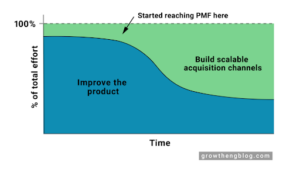TL;DR:
- A data warehouse is a central storage location for combining structured, unstructured, and semi-structured data from multiple sources.
- Data warehouses increase data accessibility and analytic capabilities, allowing for flexible data collection and analysis.
- The best data warehouse tools are Redshift, BigQuery, and Snowflake, with Snowflake offering more data type and system compatibility.
- Snowflake and BigQuery decouple storage and compute, saving on processing costs and allowing for scalability.
- A modern data platform includes tools for data extraction, transformation, and automation, streamlining the data pipeline and improving overall performance.
What is a data warehouse?
A data warehouse is a central storage location useful for combining structured, unstructured, and semi-structured data from multiple data sources.
While running a self-hosted data warehouse is possible, most are cloud-hosted because of the scalability and performance cloud-hosting can provide.
Why is a data warehouse solution important?
Data warehouses revolutionize analytics in two ways:
- They increase data accessibility and analytic capabilities by creating a universal source of truth.
- They enable users to have a flexible data stack, prioritizing data collection without needing to specially format it in advance.
For an example of how centralizing data can improve analytics, consider a company that uses a data warehouse for combining Stripe and Salesforce data. By combining data from two different sources, users gain the analytic ability to track how sales in Stripe are related to all other customer actions recorded in Salesforce’s customer relationship management (CRM) data.
By allowing data centralization without having to program all transformations in advance, data warehouses help fast-moving companies collect data without having to put curation in place. Data warehouses enable modern companies to remain data-driven and prevent any data from slipping through the cracks even as their data sources multiply.
When comparing data warehouse vs. databases, it's important to understand that databases are always highly structured, usually storing data usually in rows and columns. Data warehouses can support collection of structured and unstructured data. As a result, data warehouses can include more data sources than databases, while still enabling the advanced organization and analytics enabled by rows and columns.
Data Warehouse Products
The best data warehouse tools in terms of prevalence and performance are Redshift, BigQuery, and Snowflake.
Redshift is from Amazon Web Services, BigQuery is from Google, and Snowflake is its own independent company. Of these, we prefer Snowflake for its high-speed query performance and the flexibility it offers in hosting, languages, and file types support.
-

- Data Warehouse Solution: Snowflake vs BigQuery vs Redshift
Because Snowflake is built independently, not as part of a major ecosystem like Google or AWS, it is intentionally designed to work with more data types and systems. Redshift only handles JSON, BigQuery handles JSON and XML, while Snowflake works with AVRO, JSON, ORC, XML, and Parquet data. While BigQuery has to be run on Google, and Redshift on AWS, Snowflake can be run on Google Cloud Platform, AWS, and Azure.
Snowflake and BigQuery decouple storage and compute, saving on processing costs while enabling users to scale up as needed, while Redshift does not. Snowflake has a cost-saving feature of auto-suspension, which can be set up to shut off after a period of inactivity. Redshift also requires controlled provisioning and more maintenance than BigQuery and Snowflake, which are better suited to expanding their use of resources as needed.
Data warehouse use cases
Based on pricing models, Snowflake, which bills based on the time used, is ideal for steady querying of data such as business intelligence and sharing data with users. Since it leverages multi-tenant technology, you are billed based on time using the consolidated resources.
BigQuery is best suited for rapidly changing usage. It’s pay as you go for queries based on how much data is returned. BigQuery offers free querying for the first 1TB a month so users that go through periods of low usage may be suited for it.
With Redshift, the size of clusters needs to be predetermined. You will be charged while it is running, so it is best suited for steady workflows. On-demand usage in Redshift typically costs 3x prepaid usage, so it is doubly important to have predictable usage.
Other data warehouse solutions
Data warehouses don’t exist independently; they are part of a data stack that includes other tools that help ship data and transform it.
Redshift users use often AWS Glue for ETL, while Amazon Redshift Spectrum provides a way to perform basic data transformations and joins. BigQuery pairs with Google Cloud’s Dataflow data pipeline for ETL and BigQuery has its own data manipulation language for transforms. Snowflake doesn’t have a proprietary ETL option to connect their data or provide transformation services, but since it is the best-in-class data warehouse, there are automated data pipeline tools like Mozart Data that bundle Snowflake data with best-in-class ETL services.
Other data warehouse products include transformation tools like dbt that work within data warehouses and reverse ETL tools that ship data from a data warehouse to applications or BI tools.
A Modern Data Platform
Rather than simply providing a data warehouse solution, a modern data platform includes all the other related tools you need to make it run successfully, including tools to manage data extraction and transformation.
Modern data platforms are built around data warehouse technology, streamlining how data gets in and out of it, reducing labor and maintenance costs, and improving overall performance. They help automate your data pipeline, keeping data and reports flowing, and dashboards running, and freeing up time to work on other data projects.
Mozart Data takes the best components of Snowflake data warehouse technology and combines it with leading performance Fivetran ETL services. By bundling technologies, Mozart enables savings of 30% over building and running your own data warehouse. Contact us to see how much you can save.


